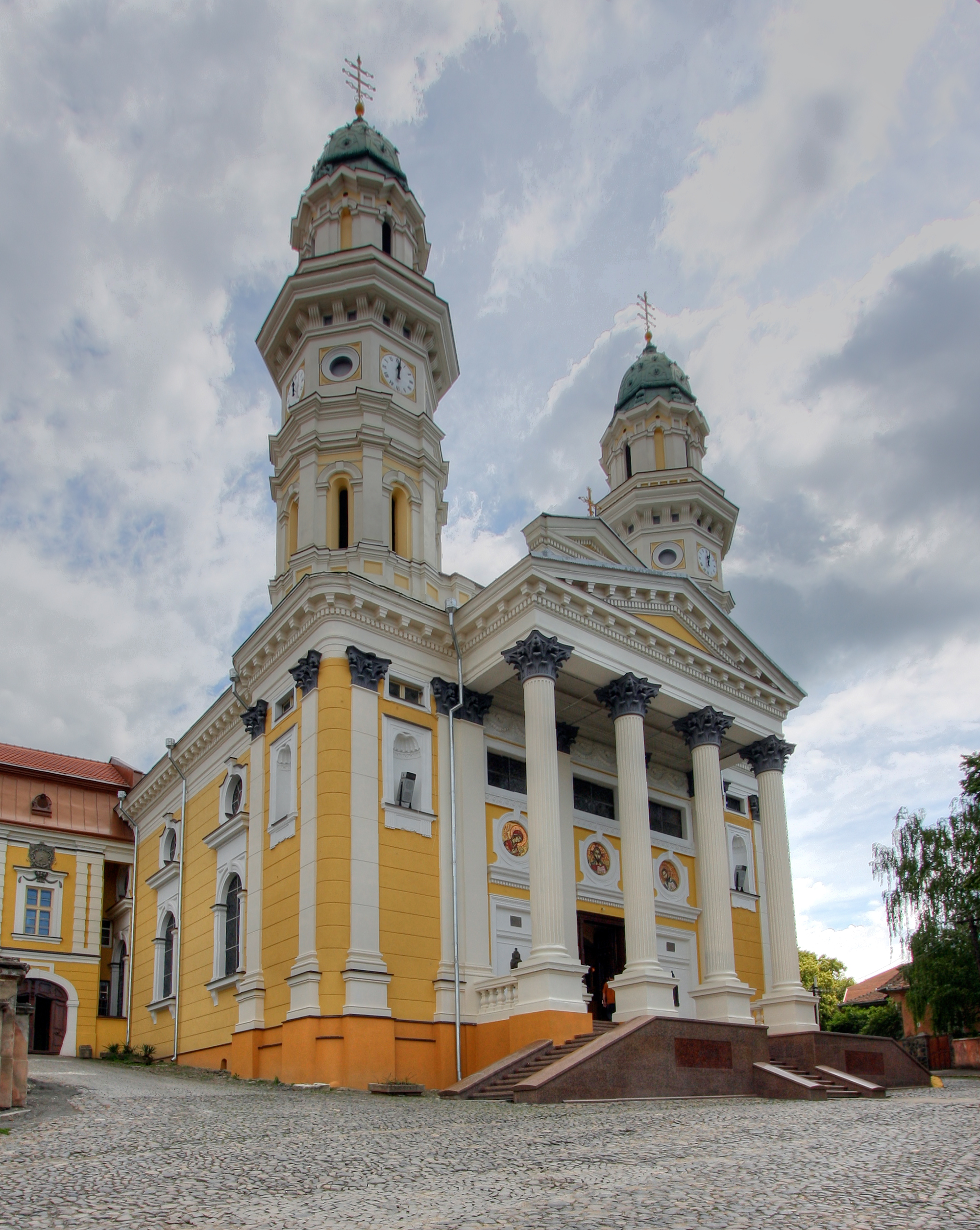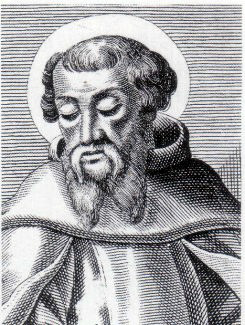|
Alexander Chira
Bishop Alexander Chira was a bishop of the Ruthenian Catholic Church. His immediate predecessor was Bishop Theodore G. Romzha. He is designated as a Confessor of the Faith. Personal information Chira was born January 17, 1897, in the village of Irhóc, Máramaros County (Vilhivci/Vilʹkhivtsi/Olkhovtsy). His death was in exile on May 26, 1983 in the city of Karaganda, Kazakhstan. Chira "was one of the many victims of the Soviet persecution of the Greek Catholic Church." While in a concentration camp in 1956, Chira clandestinely was appointed a bishop. See also * anti-Catholicism * History of the Catholic Church * Persecution of Christians * Roman Catholicism in Romania * Roman Catholicism in Ukraine The Catholic Church in Ukraine ( la, Ecclesia Catholica in Ucraina; uk, Католицька церква в Україні) is part of the worldwide Catholic Church, under the spiritual leadership of the Pope in Rome. The majority of Catholic ... References {{DEFAULT ... [...More Info...] [...Related Items...] OR: [Wikipedia] [Google] [Baidu] |
Greek Catholic Eparchy Of Mukachevo
The Greek Catholic Eparchy of Mukachevo is an eparchy (diocese) associated with the Ruthenian Greek Catholic Church under an unidentified status and territory located in the west of Ukraine, roughly equivalent with Zakarpatska Oblast. The eparchy was created by the Pope Clement XIV in 1771. The eparchy is in full communion with the Catholic Church. Its parishes observe the Byzantine Rite which is also celebrated by the majority of Orthodox Christians, and as provided for in the original terms of the Union of Uzhhorod. The eparchy is a mother eparchy of at least four modern metropoles, i.e., the Slovak Greek Catholic Church, the Romanian Greek Catholic Church, the Hungarian Greek Catholic Church, and the Byzantine Catholic Metropolitan Church of Pittsburgh in the United States.Havrosh, O. Bishop Milan: "Eparchy of Mukachevo belongs to the biggest in Ukraine" (Владика Мілан: «Мукачівська єпархія належить до найбільших в ... [...More Info...] [...Related Items...] OR: [Wikipedia] [Google] [Baidu] |
Confessor Of The Faith
Confessor of the Faith is a title given by some Christian denominations. Etymology The word confessor is derived from the Latin ''confiteri'', to confess, to profess. Among the early church fathers, it was a title of honor, designating those individuals who had confessed Christ publicly in time of persecution and had been punished with imprisonment, torture, exile, or labour in the mines, remaining faithful until the end of their lives. The title thus distinguished them from the martyrs, who were those that had undergone death for their faith. Among writers, St. Cyprian is the first in whose works it occurs. Western Christianity In the Roman Catholic Church, the title is given to saints and blesseds who were not martyred. Historically, the title Confessor was given to those who had suffered persecution and torture for the faith but not to the point of martyrdom. As Christianity emerged as the dominant religion in Europe by the fifth century, persecutions became rare, and the tit ... [...More Info...] [...Related Items...] OR: [Wikipedia] [Google] [Baidu] |
Máramaros County
Máramaros County (german: Komitat Maramuresch; hu, Máramaros vármegye; la, Comitatus Maramarosiensis; ro, Comitatul Maramureș; rue, Комітат Марамарош; uk, Kомітат Мармарош; ) was an administrative county (comitatus) of the Kingdom of Hungary. Its territory is now in north-western Romania and western Ukraine. The capital of the county was Máramarossziget (present-day Sighetu Marmației). Geography Máramaros county shared borders with the Austrian crownlands Galicia (now in Poland and Ukraine) and Bukovina (now in Romania and Ukraine) and the Hungarian counties Bereg, Ugocsa, Szatmár, Szolnok-Doboka and Beszterce-Naszód. It was situated on both sides of the river Tisza, and in the Carpathian mountains. Its area was 9,716 km2 around 1910. History The first mention of the region in the written sources is from 1199 ("''cum in Maramorisio tempore venationis venatum ivissemus''"). In the 13th century, it was almost uninhabited or ... [...More Info...] [...Related Items...] OR: [Wikipedia] [Google] [Baidu] |
Karaganda
Karaganda or Qaraghandy ( kk, Қарағанды/Qarağandy, ; russian: Караганда, ) is the capital of Karaganda Region in the Republic of Kazakhstan. It is the List of most populous cities in Kazakhstan, fourth most populous city in Kazakhstan, behind Almaty (Alma-Ata), Astana and Shymkent. Population: 497,777 (2020 Estimate); Karaganda is approximately 230 km south-east of Kazakhstan's capital Astana. In the 1940s up to 70% of the city's inhabitants were ethnic Germans. Most of the Germans of Kazakhstan, ethnic Germans were Soviet Volga Germans who were collectively deported to Siberia and Kazakhstan on Joseph Stalin, Stalin's order when Hitler invaded Kresy, Soviet-annexed eastern Poland and the Soviet Union proper in 1941. Until the 1950s, many of these deportees were interned in labor camps, often simply because they were of German descent. The population of Karaganda fell by 14% from 1989 to 1999 following the dissolution of the Soviet Union; it was once Kazak ... [...More Info...] [...Related Items...] OR: [Wikipedia] [Google] [Baidu] |
Concentration Camp
Internment is the imprisonment of people, commonly in large groups, without charges or intent to file charges. The term is especially used for the confinement "of enemy citizens in wartime or of terrorism suspects". Thus, while it can simply mean imprisonment, it tends to refer to preventive confinement rather than confinement ''after'' having been convicted of some crime. Use of these terms is subject to debate and political sensitivities. The word ''internment'' is also occasionally used to describe a neutral country's practice of detaining belligerent armed forces and equipment on its territory during times of war, under the Hague Convention of 1907. Interned persons may be held in prisons or in facilities known as internment camps (also known as concentration camps). The term ''concentration camp'' originates from the Spanish–Cuban Ten Years' War when Spanish forces detained Cuban civilians in camps in order to more easily combat guerrilla forces. Over the following ... [...More Info...] [...Related Items...] OR: [Wikipedia] [Google] [Baidu] |
Anti-Catholicism
Anti-Catholicism is hostility towards Catholics or opposition to the Catholic Church, its clergy, and/or its adherents. At various points after the Reformation, some majority Protestant states, including England, Prussia, Scotland, and the United States, turned anti-Catholicism, opposition to the Pope (anti-Papalism), mockery of Catholic rituals, and opposition to Catholic adherents into major political themes. The anti-Catholic sentiment which resulted from this trend frequently led to religious discrimination against Catholic communities and individuals and it occasionally led to the religious persecution of them (frequently, they were derogatorily referred to as "papists" or " Romanists" in Anglophone and Protestant countries.) Historian John Wolffe identifies four types of anti-Catholicism: constitutional-national, theological, popular and socio-cultural. Historically, Catholics who lived in Protestant countries were frequently suspected of conspiring against the state ... [...More Info...] [...Related Items...] OR: [Wikipedia] [Google] [Baidu] |
History Of The Catholic Church
The history of the Catholic Church is the formation, events, and historical development of the Catholic Church through time. The tradition of the Catholic Church claims the Catholic Church began with Jesus Christ and his teachings; the Catholic tradition considers that the Catholic Church is a continuation of the early Christian community established by the Disciples of Jesus. The Church considers its bishops to be the successors to Jesus's apostles and the Church's leader, the Bishop of Rome (also known as the Pope), to be the sole successor to Saint Peter who ministered in Rome in the first century AD after his appointment by Jesus as head of the Church.Hitchcock, ''Geography of Religion'' (2004), p. 281, quote: "Some (Christian communities) had been evangelized by Peter, the disciple Jesus designated as the founder of His church. Once the position was institutionalized, historians looked back and recognized Peter as the first pope of the Christian church in Rome"Norman, '' ... [...More Info...] [...Related Items...] OR: [Wikipedia] [Google] [Baidu] |
Persecution Of Christians
The persecution of Christians can be historically traced from the first century of the Christian era to the present day. Christian missionaries and converts to Christianity have both been targeted for persecution, sometimes to the point of being martyred for their faith, ever since the emergence of Christianity. Early Christians were persecuted at the hands of both Jews, from whose religion Christianity arose, and the Romans who controlled many of the early centers of Christianity in the Roman Empire. Since the emergence of Christian states in Late Antiquity, Christians have also been persecuted by other Christians due to differences in doctrine which have been declared heretical. Early in the fourth century, the empire's official persecutions were ended by the Edict of Serdica in 311 and the practice of Christianity legalized by the Edict of Milan in 312. By the year 380, Christians began to persecute each other. The schisms of late antiquity and the Middle Ages – in ... [...More Info...] [...Related Items...] OR: [Wikipedia] [Google] [Baidu] |
Roman Catholicism In Romania
The Roman Catholic Church in Romania ( ro, Biserica Romano-Catolică din România, hu, Romániai Római Katolikus Egyház, german: Römisch-katholische Kirche in Rumänien) is a Latin Rite Christian church, part of the worldwide Catholic Church, under the spiritual leadership of the Pope and Curia in Rome. Its administration for the Latin Church is centered in Bucharest, and comprises two archdioceses and four other dioceses. It is the second largest Romanian denomination after the Romanian Orthodox Church, and one of the 18 state-recognized religions. Overall data for 2011 indicated that there were 870,774 Romanian citizens adhering to the Roman Catholic Church (4.3% of the population). Of these, the largest groups were Hungarians (approx. 500,000, including Székely and Csángó), Romanians (approx. 300,000), Germans (approx. 20,000) and Slovaks (approx. 9,000). [...More Info...] [...Related Items...] OR: [Wikipedia] [Google] [Baidu] |
Roman Catholicism In Ukraine
The Catholic Church in Ukraine ( la, Ecclesia Catholica in Ucraina; uk, Католицька церква в Україні) is part of the worldwide Catholic Church, under the spiritual leadership of the Pope in Rome. The majority of Catholics in Ukraine belong to the Ukrainian Greek Catholic Church, while significant numbers of others belong to the Latin Church (known as Roman Catholic), Ruthenian Greek Catholic Church, or Armenian Catholic Church. Types of Catholic churches by rite * Roman Rite: Latin Church ( Latin Church in Ukraine) * Armenian rite: Armenian Catholic Church ( Armenian Catholic Archdiocese of Lviv) * Byzantine rite: Ukrainian Greek Catholic Church and Ruthenian Greek Catholic Church (Greek Catholic Eparchy of Mukachevo) History and data The Catholic Church in Ukraine consists of members of the Ukrainian Greek Catholic Church as well as the Roman (Latin Rite) Catholic Church in Ukraine, Ruthenian Catholic Church, and the Armenian Catholic Church. The ... [...More Info...] [...Related Items...] OR: [Wikipedia] [Google] [Baidu] |
Victims Of Anti-Catholic Violence
Victim(s) or The Victim may refer to: People * Crime victim * Victim, in psychotherapy, a posited role in the Karpman drama triangle model of transactional analysis Films and television * ''The Victim'' (1916 film), an American silent film by the Fox Film Corporation starring vamp Valeska Suratt * ''The Victim'' (1930 film), an American film starring Esther Howard * ''Victim'' (1961 film), a British drama film featuring Dirk Bogarde * ''The Victim'' (1972 film), an television film produced for American Broadcasting Company * ''The Victim'' (1980 film), a Hong Kong film directed by and starring Sammo Hung * ''Victim'' (1999 film), a Hong Kong film directed by Ringo Lam * ''The Victim'' (2006 film), a Thai horror-thriller film written by Monthon Arayangkoon * ''Victim'' (2010 film), an American indie film directed by Matt Eskandari * ''The Victim'' (2011 film), an American horror film written by and starring Michael Biehn * ''The Victim'' (2012 film), a Konkani theatrical ... [...More Info...] [...Related Items...] OR: [Wikipedia] [Google] [Baidu] |




.jpg)


